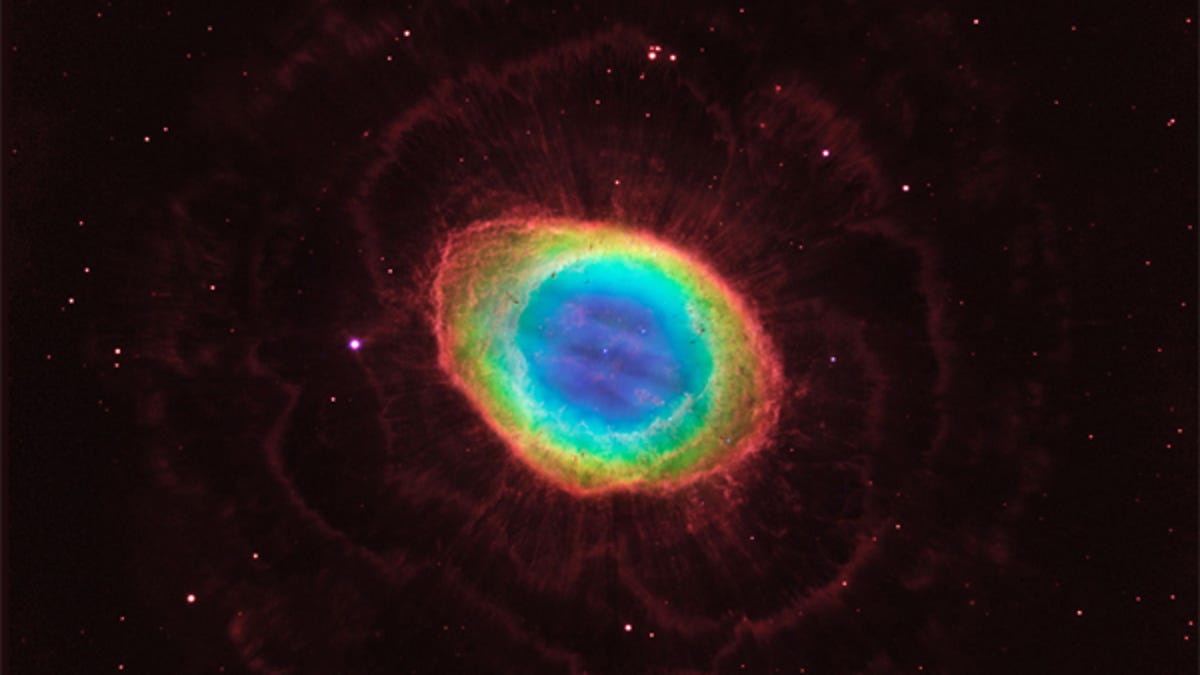The true shape of the Ring Nebula
New images from NASA's Hubble telescope reveal that the Ring Nebula is more complex than we knew — it's not a bagel, but a jam doughnut.

(Credit: NASA; ESA; CR Robert O'Dell, Vanderbilt University; GJ Ferland, University of Kentucky; WJ Henney and M Peimbert, National Autonomous University of Mexico; David Thompson, University of Arizona)
New images from NASA's Hubble telescope reveal that the Ring Nebula is more complex than we knew — it's not a bagel, but a jam doughnut.
Hubble has been doing some interesting work with nebulae recently, it seems. About a month ago, we saw new images of the Horsehead Nebula in the infrared spectrum, revealing new details of the famous gas formation.
The newest nebula to get the fine detail treatment is the equally famous Ring Nebula. Combining visible-light images from Hubble with infrared data from the ground-based Large Binocular Telescope in Arizona has revealed that the structure of the nebula is more complex than was previously believed.
"The nebula is not like a bagel, but rather, it's like a jelly doughnut, because it's filled with material in the middle," said C Robert O'Dell of Vanderbilt University in Nashville, Tennessee, who leads the research team to obtain the images. "With Hubble's detail, we see a completely different shape than what's been thought about historically for this classic nebula. The new Hubble observations show the nebula in much clearer detail, and we see things are not as simple as we previously thought."
Previous observations had revealed the gas inside the ring, enveloping a dying star. The new image shows dark, irregular knots of gas embedded in the inner rim, pushing outwards like tentacles. These formed when fast-moving expanding hot gas ejected by the star pushed into slow-moving cooler gas previously ejected. These knots have now been matched up to spikes of light around the main ring.
The gas, which is expanding at a rate of about 69,000 kilometres per hour from a nebula that is already 1 light year in diameter, was originally ejected around 4000 years ago, as the original star began to collapse from red giant to white dwarf. This behaviour gives NASA's scientists some insight into what will happen to our own sun when it, too, eventually begins to die in about 6 billion years — although, since the Ring Nebula's star at its prime was several times larger than the sun, the latter's dying throes probably won't be nearly so gorgeous.
Via www.nasa.gov

